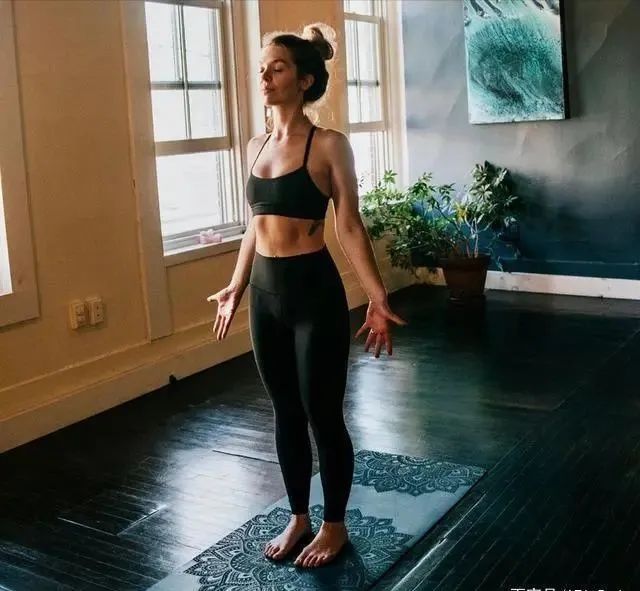“The most important equipment for practicing yoga is your body and mind,” said yoga master Rodney Yee, who is one of the most respected masters in yoga today.

If you are not familiar with him, let me tell you: he is the first yoga instructor in the world to launch Yoga CD course, and even Madonna’s yoga teacher Duncan Wong is also his student.

Rodney Yee has studied Yoga for more than 30 years under the guidance of Iyengar, the first yoga master who introduced yoga from India to the West.

About yoga, Yee said, “movement is only one eighth of yoga practice!” many people say that practicing yoga can improve the flexibility of the body.

But Yee repeatedly stressed: “Yoga is not to raise your feet above your head! We may do these actions, but that is to explore our body and mind.

It doesn’t matter where your feet can be lifted.

The action is only one eighth of yoga practice.

Yoga pursues physical and mental harmony, while flexibility is only a function of practice.

Yoga has a greater impact on human breathing and nervous system In view of this, Rodney Yee also suggests that for yoga practice: “Learn to listen to your inner voice, choose the yoga that makes you most comfortable by intuition, and don’t challenge yourself too much.

If you are a novice, you must ‘shop around’ and find out the best way for yourself.

At present, there are many different genres of yoga, and teachers teach in different ways.

You should use your body to feel which one is most attractive to you.

He also said:” The responsibility of a yoga coach is to help learners understand yoga and achieve physical and mental unity.
If your coach has always asked you to challenge your body, you can consider changing a coach.
Here are 10 yoga postures he practices every day.
Let’s learn together! 1.
Mountain style “Mountain pose is performed around the central axis.
It is an approximately vertical line, starting from the front inner corner of the heel, extending directly in front of the tailbone, and passing through the front of the spine to the mouth and top of the head,” Yee said.
“People need to make subtle adjustments and sense of posture changes.” Take the skill of mountain pose during the whole exercise and return to mountain pose between the main positions of the exercise.
2.
Handstand Yee said: “handstand quickly brings you into the present moment and changes your vision and mood.” “this is a good time to experience breathing in fear and accept perception.” For intermediate practitioners, you can practice this position at the beginning of the exercise.
For beginners, do the handstand after the basic preparation position (as follows: dog pose).
3.
Triangle Yee said: “triangle awakens your legs and trains them to support and nourish your torso.” “It teaches you about many complex relationships between legs, arms, torso and head and neck.
Practice trigonometry at the beginning of the sequence to make the legs more effective relative to your spine and arms.
4.
Half moon” half moon feels like flying when you find the balance point, “Yee said.
“When you balance with your legs, it will create accurate balance and teach you the accurate alignment of your feet, knees and hips.” after exercising your legs, add the half moon pose to the middle of the exercise to achieve balance and mindfulness.
5.
Head handstand Yee said: “handstand realigns the head with the heart and strengthens sensitive neck muscles at the same time.” “Handstand makes you concentrate and calm your mind.” for intermediate practitioners, you can try handstand at the beginning of the sequence to align yourself and start strength.
For beginners, please try to wake yourself up in the middle.
6.
Stand back bend Yee said: “stand back bend establishes a deep connection between your feet and the earth.” “It brings health to the spine through clear expression and awareness, solves the fear of retrogression, and teaches us not to hold our breath at the beginning of panic.” add this pose to the middle and climax of the back bend series.
You can also bring it throughout the sequence.
7.
Leg up pose “leg up pose is my favorite pose,” Yee said.
“Your legs are above the heart, which helps the blood flow back to the heart.
Your chest is open and makes you feel the cooling of the nervous system.
We should do this pose every day to transition from work to life.” add this pose to the end of the sequence as the cooling pose.
8.
Supine beam pose Yee said: “supine beam pose is to observe breathing and absorb prana “This is very useful for relaxing and repairing the legs.” practice this pose at the end of the exercise to cool the body and move to the corpse spreading pose.
9.
Corpse spreading pose Yee said: “corpse spreading teaches us how to relax while maintaining attention and integration.” “It teaches us how to let go and live in the present.
The corpse spreading pose is a great way to keep calm.” do your best to always practice this pose at the end of the asana practice and before and after the breathing practice.
10.
The whole lotus Yee said: “if you do well, the whole lotus is the best posture for meditation.” “it teaches us about panavayu (five air currents of the human body) It has a perfect connection with pranavayu, and establishes the connection of the body, so that the muscles in the posture can start at least and play the best role.
“Use this posture in meditation.
Most practitioners need to carry out complete hip opening training in advance.
For experienced yoga people, please improve the quality of meditation practice in the posture…

